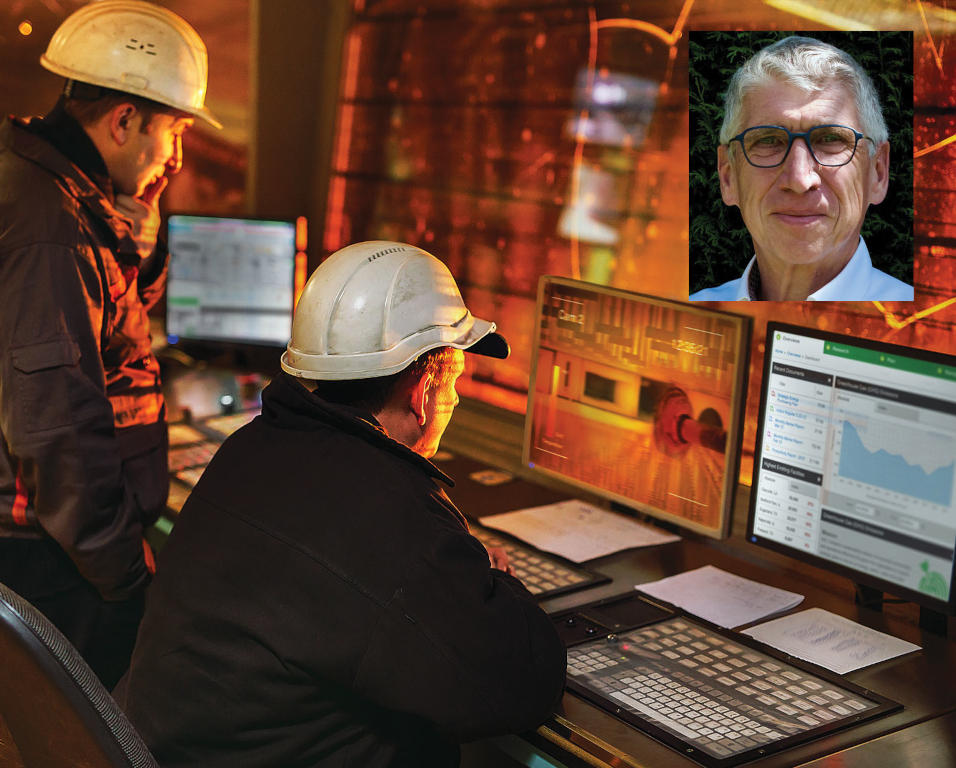Without downgrading the vast skills of many competent furnace builders, designing traditional regenerative or oxy-fuel furnaces largely leans on copying older designs, supported by sophisticated Computational Fluid Dynamics (CFD) modelling trying to improve them.
Since World War Two, those furnaces have come a long way, quadrupling their energy efficiency. Quite an achievement!
Today, we know that ongoing energy efficiency improvements to existing furnace designs have ended. On top of that, the increasing pressure for low-carbon glass manufacturing, mainly coming from the glass industry and its customers, means that the 160 years old regenerative furnace designs will retire. They served us well with their long lifetimes, flexibility, and massive throughputs.
Fortunately, new low-carbon designs are arriving based on alternative green fuels and electrical energy. Green electrical energy – based on the 180-year-old [thermoelectric] Joules heating methodology – is a preferred option, with a long track record, even in bigger furnaces. Although it still has its challenges, it boasts a high technological readiness level and its use can be increased by looking into some major aspects of electrical power.
Back to basics
Let’s have a look at the basics. Glass at melting temperature has a relatively high (electrical) conductivity. Or, in other words, a very low resistivity. The electrodes, positioned in the molten glass and feeding the electrical power into the glass, will need to run at relatively low voltages and consequently run at very high currents
(P=I2 x R and P=U x I). There is little we can do about it other than playing with the distance between the electrodes and their phasing. Changing the glass composition to increase its resistivity is unfortunately not possible without affecting other, more important properties of the glass. The unavoidable high electrode currents will have an impact on the lifetime of the electrodes, leading towards unwanted maintenance intervals. There are three options to elongate their lifetime:
- Decrease the current density on the electrodes
- Use of cathodic protection
- Run the electrodes on higher frequencies of electrical power
Current density
Reducing the electrode’s current density is strongly related to the current applied to the electrode itself and the active surface of the electrode in contact with the molten glass. Both are subject to furnace design and can be influenced by putting the electrodes further apart (increased resistance = higher voltage = lower current) or expanding the surface of the electrode by increasing their size and number. Both measures come with disadvantages, such as increased energy losses in the system outside the furnace due to longer cabling, increased inductive losses and more electrode cooling losses.
Cathodic protection
This method has successfully been tested and described in many studies. These have shown that electrode wear can be potentially lowered by applying a slight amount of DC current next to the high-current AC heating power. While this needs more investigation, the process looks very promising but has not yet reached a level of sophistication in which it can be applied in standard electoral furnace boosting systems.
Higher frequencies
Running electrodes at 50Hz or 60Hz is the worst thing we can do to an electrode. Studies have shown that increasing the electrical power’s frequency will exponentially bring down its wear. Unfortunately, it would need several conversion stages to convert 50Hz or 60Hz to higher frequency, causing potential energy efficiency losses. IGBT or MOSFET-based power control systems, capable of increasing the frequencies, are more complex and subject to increased maintenance.
Higher frequencies will shrink the size of the transformers, allowing them to be closer to the melting process and bring down the resistive losses, but will also impact the noise the system will produce. This method has not been investigated sufficiently, but with new semiconductor technologies we are in the middle of a process which will open further possibilities.
Future power supply systems
“For every complex problem, there is an answer that is clear, simple and wrong”.1 That is very applicable to the problems we face with future electrical power supply systems for hybrid and all-electric furnaces. Many pros and cons need to be carefully investigated, keeping in mind that any solution should be as straightforward and energy efficient as possible while also keeping an eye on CapEx and maintainability.
If we move up to 80–100% of electrical power in glass furnaces, we need to consider that perhaps the base energy load of the furnace can be managed by ‘simple’ transformer technology, next to more complex and more granular power control on the electrodes that impact the melting behaviour and convection currents of the furnace.
Choosing the right equipment, considering what equipment on site can be reused, investigating where these systems need to be located to keep cabling short and energy losses low, and finally providing clear information on the actual status of the whole system, will help predict when and what maintenance is required and secure low OpEx and process stability.
To be able to design the best possible electrical system and choose the right equipment and control, it is vital to merge the knowledge of furnace designers with the knowledge of power and process system designers. Both design teams need to know their options and limitations to achieve the best possible low-carbon glass melting solutions, providing smooth control at acceptable CapEx and, most importantly at the lowest cost of ownership.
Schneider Electric’s EcoStruxure for Glass is fully committed to green glass transformation and decarbonisation through electrification and digitalisation, enabling power and process integration – from grid to glass.
1. [This aphorism is usually attributed to American journalist, essayist and satirist Henry Louis Mencken, 1880–1956.]
Schneider Electric hosted the GlassTrend annual meeting, held on 17–18 October, at Intencity in Grenoble, where the glass industry community discussed decarbonisation as one of the key challenges in the transition to sustainable glass manufacturing and how, next to the development and implementation of sustainable technologies, smart sensors, and process control are required to optimise the use of
these technologies in view of CO2 footprint and energy efficiency: https://www.glasstrend.nl/events/


